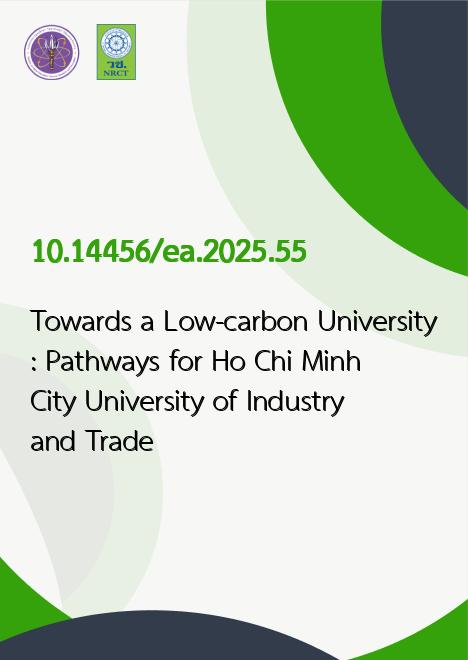
|
Towards a Low-carbon University: Pathways for Ho Chi Minh City University of Industry and Trade |
|---|---|
| รหัสดีโอไอ | |
| Creator | Tran Thanh Tu |
| Title | Towards a Low-carbon University: Pathways for Ho Chi Minh City University of Industry and Trade |
| Contributor | Nguyen Vu Hoang Phuong, Tran Thanh Tu |
| Publisher | Thai Society of Higher Education Institutes on Environment |
| Publication Year | 2568 |
| Journal Title | EnvironmentAsia |
| Journal Vol. | 18 |
| Journal No. | 3 |
| Page no. | 112-121 |
| Keyword | Carbon Dioxide Emissions, AIM/Enduse Model, Bottom-up Approach, Low-carbon University |
| URL Website | http://www.tshe.org/ea/index.html |
| Website title | EnvironmentAsia |
| ISSN | 1906-1714 |
| Abstract | This research applies the Asian-Pacific Integrated Modeling (AIM) Enduse (AIM/Enduse) model to analyze several pathways in 2030, namely normal development scenario for 2030 (2030BAU) and mitigation scenario (2030CM) for electricity consumption and carbon dioxide (CO2) emissions of the two main buildings of Ho Chi Minh City University of Industry and Trade, Vietnam (HUIT). Results show that the electricity savings achieved through the transition to advanced technology and energy-efficient equipment in the 2030CM scenario help reduce electricity consumption and CO2 emissions by 11% compared to the 2030BAU scenario. In which, electricity consumption by computer equipment accounts for 50.9%, followed by air conditioning systems and lighting with 26.7% and 22.4%, respectively. Moreover, the energy consumption behavior of students is crucial in enhancing the potential for electricity savings at the university. This research suggests that the university should conduct annual energy audits for all campus activities, with smart meters to be installed. Furthermore, all electrical devices with detailed specifications should be recorded, maintained, and updated. These findings are essential for HUIT to implement energy-saving actions and reduce total energy consumption, contributing to sustainable investment and increasing the potential for greenhouse gas emission mitigation. The university can use the financial savings from reducing electricity generation to invest in energy-saving devices and solar panel installation. |